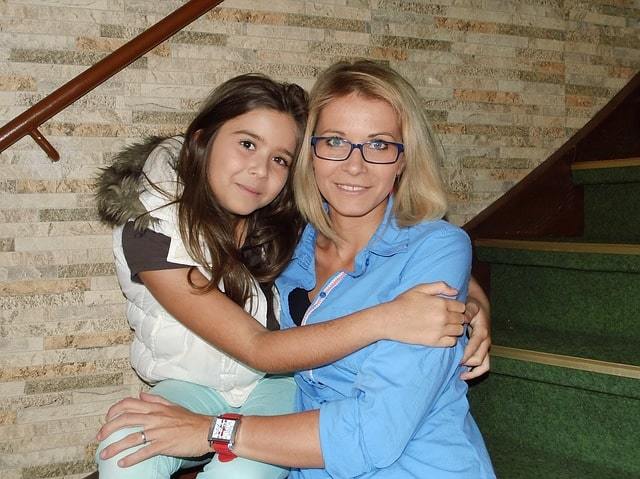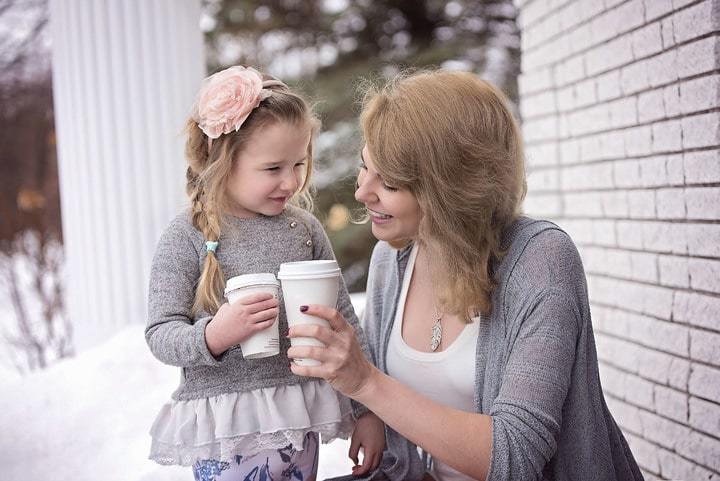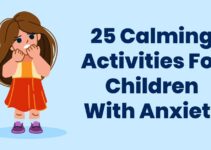Knowing that your child has gone through a traumatic event is arguably one of the most stressful, devastating, and overwhelming things a parent can experience. And yet, since parents serve as a child’s strongest source of support and safety in everyday life, they must muster the courage to calmly deliver this support, especially after a child experiences a traumatic event.
If your child has experienced a trauma, you may feel anxious about what to do to help him recover.
Table of Contents
- PTSD Symptoms
- Factors that Increase the Risk of a Child Developing PTSD
- Parental Strategies That Can Help a Traumatized Child Recover
- 1. Be Sensitive & Reassuring
- 2. Resume “Normal” Activities
- 3. Initiate Parent-Child Conversations about the Trauma
- 4. Help your Child Identify Triggers
- 5. Diffuse the Situation
- 6. Refrain from Using Physical Punishment
- 7. Praise Your Child
- 8. Listen
- 9. Be Patient
- 10. Re-Establish “Pre-Trauma” Routines
- 11. Stress Safety
- In Summary…
PTSD Symptoms
Every child will likely experience some form of stress in early life, whether it be a car accident, death of a loved one, a stressful move, or another more traumatic experience like war, abuse. Most children naturally develop negative emotional reactions to aversive experiences, but those negative feelings are most often self-limited, resolving over time.
In a minority of children, however, their symptoms become more severe and persistent, and eventually develop into post-traumatic stress disorder (PTSD).
A child with PTSD will experience a specific set of symptoms for at least 1-month: [1]
- Re-experiencing the trauma (flashbacks or nightmares)
- Avoidance (avoiding upsetting memories and reminders)
- Hyperarousal (persistent sleep disturbances, “jumpiness,” heightened startle reflexes)
- Negative mood and cognition (persistent negative views of others or self, anxious/depressed affect)
The longevity of the symptoms is what differentiates it from an acute stress reaction, which is self-limited (i.e. lasting less than 1-month). Therefore, if your child experiences these symptoms, it is important to have him or her evaluated by a mental health professional. The earlier a correct diagnosis is established, the sooner an appropriate therapy and treatment can begin, and the more likely a full recovery will occur.
Factors that Increase the Risk of a Child Developing PTSD
There are some social and familial factors which have consistently been associated with a more severe and protracted course of PTSD in children:[2]
- Family conflict/unstable home environment
- Mental health problems in a parent or caregiver (anxiety, PTSD)
- Parental rejection of the child
- Parents inducing guilt and anxiety in the child
- Low parental support
- Parental withdrawal/irritability with child
Studies in the pediatric population have determined that these other factors can also increase a child’s risk of developing PTSD:
- If the parents develop PTSD themselves[4]
- Parent and child PTSD have been found to be associated with each other.. Notably, child trauma can induce parent PTSD, even if the parents never witness the trauma themselves.
- This may then result in parental difficulties in discussing/ acknowledging the trauma and negatively impact child adjustment.
- If the parents advocate “avoidance-based coping strategies”[4]
- Use of avoidance strategies can be maladaptive. Child avoidance and parental avoidance have been linked with PTSD severity because parents might be modeling unhealthy coping mechanisms to their children.
- Avoidant coping could be used by parents who are themselves experiencing difficulty with their child’s trauma. This may lead to the child feeling unsupported and alone in their trauma.
- PTSD symptoms are worse in children whose parents assume that the children would approach them to talk about it “if they needed to.” So, it is important not to assume that your child will just come to you if they need you. Children oftentimes need to be approached in order to feel vulnerable enough to start the healing process.
- Overprotection[4]
- On the other extreme, parental overprotection can increase the risk of PTSD symptoms. The theory behind this association is that parental overprotection and avoidance coping are often practiced by the same parents.
- When a child is overprotected, it may augment his perceived vulnerability to the threat. It restricts child autonomy and also subconsciously indicates to him that he is a victim, in danger, or unable to recover from his trauma.
- Parental Oversensitivity[3]
- Although it may seem counterintuitive, parental oversensitivity has been associated with worse PTSD symptoms 2 years after the traumatic event occurred.
- This may be related to the overprotection risk discussed above. It may also be due to the parent inadvertently reminding the child of triggers. This ironically tends to occur when the parent is trying to protect the child from experiences which may elicit a negative reaction.
- If your child notices you stressing about a situation, it can make them hyperaware and hyper-focused on the same situation. Ironically, this tends to occur with parents, who are trying to protect their child from experiences that may elicit a negative reaction.
- Therefore, if your child witnesses you stressing about a situation, it can make him or her hyperaware and hyper-focused on the same situation.
Related Article: Your Guide to Post Traumatic Stress Disorder (PTSD)
So, what can you do after your child experiences a trauma to decrease his chances of developing PTSD or to shorten the length of his symptoms?
Although there are no well-documented strategies known to certainly prevent PTSD from developing, there are some strategies which are known to facilitate recovery and shorten his course of symptoms:
Parental Strategies That Can Help a Traumatized Child Recover
Listed below are tips that help your child recover from his or her trauma: [5]
1. Be Sensitive & Reassuring

Remember, some traumatized children will intentionally push their parents away (even if they want nothing more than for you to connect with them). In spite of this, provide attention, comfort, and encouragement in ways your child will accept.
For younger children, this may mean giving extra hugs, offering more cuddle times, or snuggling for longer at bedtime. For older children, this might just mean spending time together as a family. Follow their lead and be patient if children seem needy.
2. Resume “Normal” Activities
Parents who reinstate their child’s pre-trauma activities and schedule, earlier rather than later, tend to see their children improve faster.
While it is important to watch your child closely to make sure they are open and amenable to activities, encouraging him or her to participate in the extracurricular activities and hobbies they enjoyed before can have a positive impact on their recovery.
This helps foster their confidence again and also helps them channel negative energy into a positive outlet.
3. Initiate Parent-Child Conversations about the Trauma
This provides the child with a much-needed opportunity to reassess the trauma and have misunderstandings about the event corrected by the parent. Reassure him or her that the situation was not their fault.
This is especially important early on before the child’s memories of the event are reinforced and solidified.
4. Help your Child Identify Triggers
Watch for behavior that doesn’t “fit” the situation. Is something distracting your child? Is something making him more irritable, angry, or stressed than you would expect? There may be seemingly benign things in your home or environment which may be triggering your child without you realizing it.
Once you identify those triggers, help your child avoid them until he has adjusted and healed from his trauma.
5. Diffuse the Situation

If this occurs, respond calmly but try not to respond emotionally. Keep your voice calm and quiet. Attempt to disarm his anger or stress. This is difficult if you are caught off guard or hurt by his reaction. Don’t disengage, but rather, acknowledge your child’s feelings without taking them personally
6. Refrain from Using Physical Punishment
This is of utmost importance if the traumatic event involved abuse. It is important to set limits and discipline. Children do better when they know the rules. But avoid physical punishment when your child disappoints you.
7. Praise Your Child
If your child succeeds in finding acceptable words and means to express himself when he is feeling overwhelmed and victimized, this is an accomplishment worthy of praise and acknowledgment. Commend him when this occurs.
Positive reinforcement is far more powerful than punishing negative behaviors. “Catch” your child behaving positively, and lavish attention and approval on him when this occurs. This encourages long-term change.
8. Listen
It is important not to avoid difficult or uncomfortable conversations, especially about the trauma. Teaching avoidance as a coping mechanism not only delays recovery, but it also teaches your child to avoid future problems when they occur.
This is the time to listen and help your child face his trauma. Empowering him will give him the tools to overcome this trauma, and future disappointments as well.
9. Be Patient
On the other hand, it is important not to push your child to talk about the trauma if he or she is not ready. It is normal for children to have conflicting feelings about these events, so it is important to allow your child to decide when and how to breach this conversation with you in order to avoid feelings of confusion. This also tells your child that you believe he is in control, which is imperative in re-establishing feelings of adequacy
10. Re-Establish “Pre-Trauma” Routines

11. Stress Safety
In order to encourage relaxation and to help your child de-stress, encourage him to practice meditation, slow breathing, mindfulness exercises, and verbalize reassuring statements (for example, “I am safe now.”)
In Summary…
If you have a child, who has experienced trauma – be patient with him or her. In other words, take your direction from your child. Remember, every child is different and every trauma is different. Keep in mind that everyone has a personal history that, in part, determines how he or she will react to traumatic situations.
It is also important to understand that some children may be more resilient, than other children, which means that one traumatized child’s recovery may look different than another’s.
Therefore, the ultimate goal of recovery is always to rebuild trust, instill a sense of self-worth and value, and to empower your child to feel capable of succeeding, despite the trauma. This is the key to helping your child conquer the after-effects of the trauma.
Furthermore, it is important to seek help for your child from a qualified mental health professional, be patient, listen to your child, and praise and encourage him or her, as much and as often as possible. If you do these things for your child, he or he will most likely be well on his or her way to a full recovery.
References
- American Psychiatric Association. (2013). Diagnostic and statistical manual of mental disorders (5th Ed.).
- American Academy of Pediatrics. (2013). Parenting after trauma: Understanding your child’s needs. A guide for foster and adoptive parents. Elk Grove Village, IL: AAP and Dave Thomas Foundation for Adoption.
- Bokszczanin A. (2008). Parental support, family conflict, and overprotectiveness: predicting PTSD symptom levels of adolescents 28-months after a natural disaster. Anxiety Stress Coping, 21, 325–35.
- Ehlers, A., Mayou, R. A., & Bryant, B. (2003). Cognitive predictors of posttraumatic stress disorder in children: Results of a prospective longitudinal study. Behav Res Therapy, 41, 1–10.
- National Child Traumatic Stress Network. (2014). Complex trauma: Facts for caregivers.











Very helpful & informative